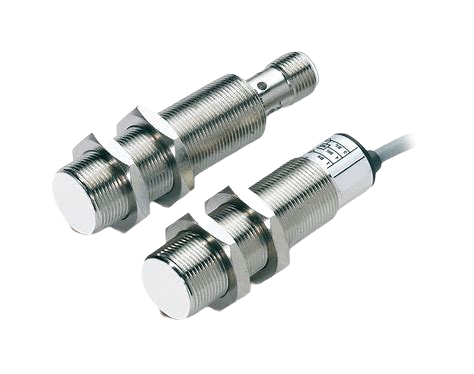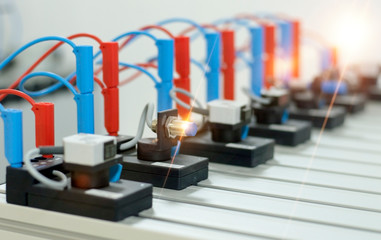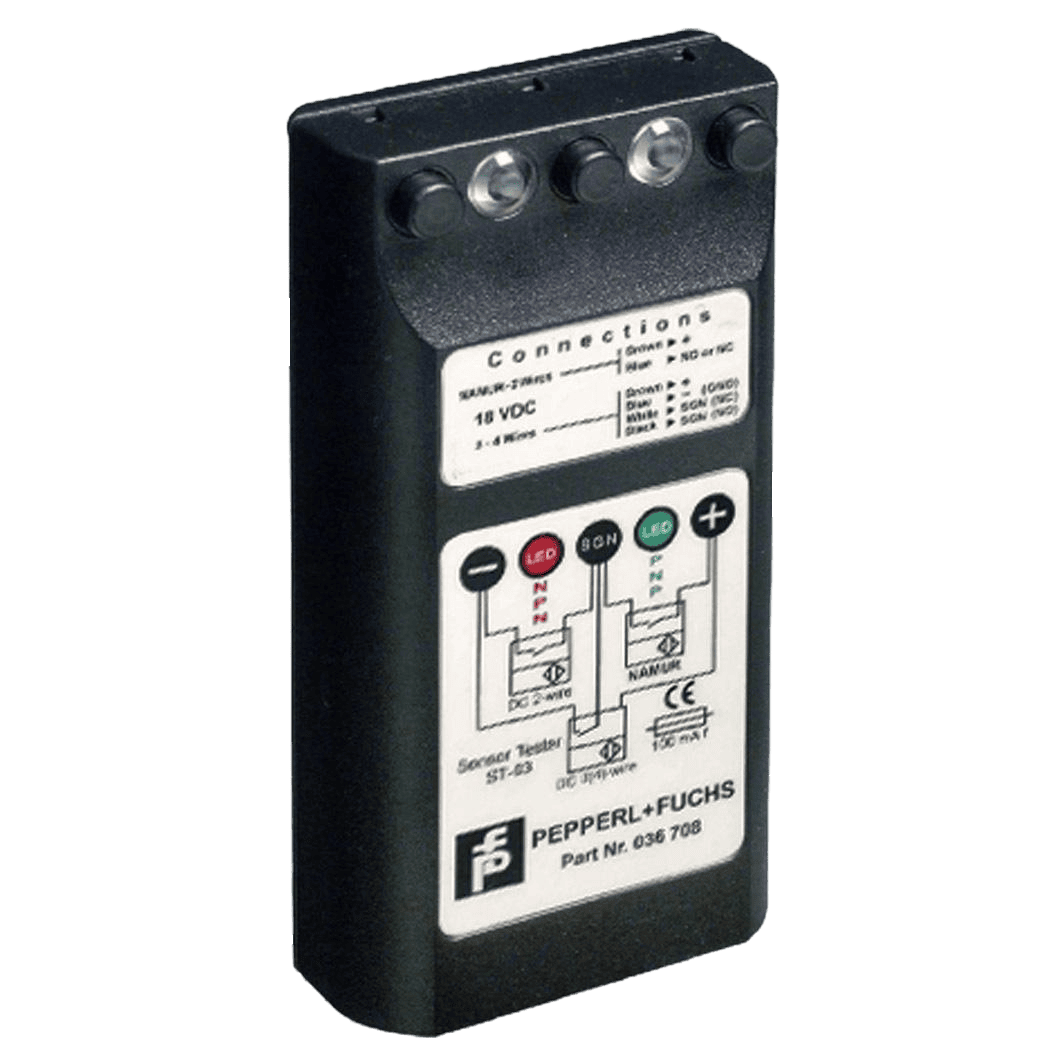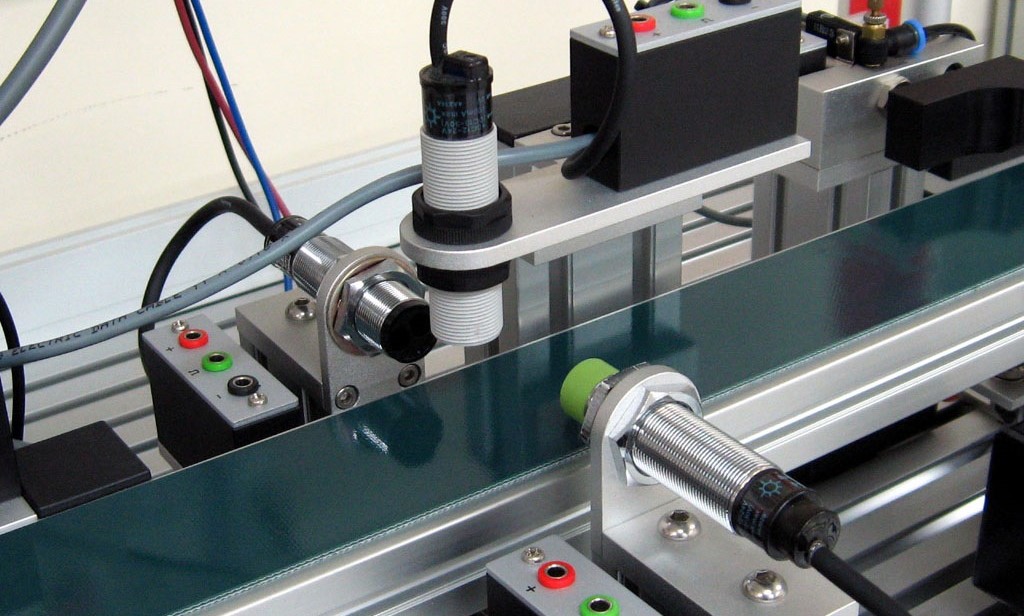Effective Methods for Testing Inductive Sensors
24.05.2024
Inductive sensors are important components in industrial automation systems that are used to detect the presence or absence of metal objects. They are used in a wide range of applications, including conveyors, packaging machines, CNC machines and material handling systems. This manual provides comprehensive instructions for testing inductive sensors to ensure proper operation and optimal performance.
What is an Inductive Sensor?

An inductive sensor is a type of proximity sensor used extensively in industrial automation to detect the presence or absence of metal objects. Unlike other sensors that require physical contact, inductive sensors operate without touching the object they detect. They work by generating an electromagnetic field from a coil within the sensor. When a metallic object enters this field, it disturbs the field, causing the sensor to detect the object's presence.
Inductive sensors are incredibly versatile, used in a variety of applications such as detecting metal parts on a conveyor belt, confirming the positioning of machine components, or ensuring safety by detecting the presence of a metallic object before allowing machinery to operate. They are preferred in many industrial settings due to their durability, reliability, and ability to function in harsh environments, including those with dust, oil, and high temperatures.
Importance of Testing Inductive Sensors
Testing inductive sensors is critical for several reasons.
Firstly, it ensures accuracy. Accurate sensor readings are essential for the smooth operation of automated systems. If a sensor fails to detect a metal object accurately, it can lead to production errors, increased waste, and even damage to machinery.
Secondly, regular testing helps in preventing downtime. Industrial environments often rely on continuous operation. A faulty sensor can cause unexpected shutdowns, leading to significant downtime and financial loss. By routinely testing sensors, you can identify and resolve potential issues before they cause system failures.
Thirdly, testing inductive sensors enhances safety. In many automated systems, sensors play a crucial role in safety mechanisms. For example, they can detect the presence of a worker or an object in a hazardous area, triggering an automatic shutdown to prevent accidents. Ensuring that these sensors function correctly is vital for maintaining a safe working environment.
Ways to Check the Inductive Sensor
Ensuring the proper functionality of inductive sensors is crucial for maintaining the efficiency and safety of industrial automation systems. There are several effective methods for testing inductive sensors, each suited to different aspects of their operation.

Here are five key ways to check an inductive sensor
1. Visual Inspection
The first step in inductive sensor testing is a thorough visual inspection. This simple yet essential check helps identify obvious issues that might affect sensor performance:
- Physical Damage: Look for cracks, dents, or any physical deformities on the sensor body. Damage can impair the sensor’s ability to function correctly.
- Connector Integrity: Ensure that the electrical connectors are not corroded, loose, or damaged. Faulty connections can lead to intermittent sensor performance or complete failure.
- Cleanliness: Check for dirt, oil, or debris buildup on the sensor's face. Contaminants can interfere with the sensor's ability to detect metallic objects accurately.
By addressing these visible issues, you can often prevent more complex problems and ensure the sensor operates in optimal conditions.
2. Checking with a Multimeter
A multimeter is a versatile tool for testing various electrical aspects of an inductive sensor:
- Voltage Check: Set the multimeter to measure voltage and check the power supply to the sensor. Ensure it matches the specifications provided in the sensor’s datasheet.
- Resistance Measurement: Use the multimeter to measure the resistance across the sensor’s output terminals. Comparing these readings to the expected values can help identify internal faults or discontinuities.
- Continuity Test: Perform a continuity test to ensure there are no breaks in the sensor’s internal wiring or connections.
Multimeter tests can quickly diagnose electrical issues, ensuring the sensor receives proper power and has intact internal connections.
3. Using an Oscilloscope
An oscilloscope provides a detailed view of the sensor’s signal characteristics, which is particularly useful for diagnosing more complex issues:
- Waveform Analysis: Connect the oscilloscope probes to the inductive sensor output. Observe the waveform to ensure it is consistent with the expected signal pattern.
- Signal Stability: Check for any irregularities or noise in the waveform, which could indicate issues like electrical interference or sensor degradation.
- Response Time: Measure how quickly the sensor responds to the presence of a metallic object. A delayed response can affect the performance of automated systems.
Using an oscilloscope allows for a comprehensive analysis of the sensor’s dynamic performance, providing insights that simpler tools might miss.
4. Simulation of Sensor Operation
Simulating the sensor's operation in a controlled environment helps verify its functional response:
- Target Simulation: Use a known metallic target to simulate the approach and movement in front of the sensor. Observe whether the sensor correctly detects the presence and absence of the target.
- Sensitivity Adjustment: If the sensor has adjustable sensitivity settings, test its response at different settings to ensure it can reliably detect targets at the required range.
- Operational Conditions: Simulate various operational conditions, such as different speeds of target approach or varying distances, to ensure the sensor performs reliably under all expected scenarios.
Simulation tests confirm that the sensor functions as intended in real-world conditions, providing confidence in its deployment.
5. Using a Special Tester

Special testers designed specifically for inductive sensors can provide comprehensive diagnostics:
- Diagnostic Functions: These testers often include features like automatic detection of sensor type, measurement of response time, and detailed signal analysis.
- User-Friendly Interface: Special testers typically have intuitive interfaces that guide users through various tests, making them accessible even to those less experienced with sensor diagnostics.
- Advanced Testing Capabilities: They may offer advanced testing capabilities, such as stress testing under different environmental conditions or simulating complex operational scenarios.
Using a special tester can streamline the testing process, offering precise and reliable diagnostics that are difficult to achieve with general-purpose tools.
Troubleshooting common problems with inductive sensors
Inductance sensor are critical components in industrial automation, but like all equipment, they can experience issues that affect their performance. Effective troubleshooting is essential to quickly identify and resolve problems, minimizing downtime and maintaining system efficiency.
Here are some common issues with inductive sensors and how to address them
1. The sensor does not respond
- Check the connections: Make sure the sensor is properly connected to the power source and the load. Check cables sensors and connectors for damage.
- Check Power: Make sure the sensor is getting the correct voltage. You can use a multimeter to check the voltage at the sensor's power terminals.
- Check the clearance: Make sure the metal object is within the working clearance of the sensor. The operating clearance is usually specified in the sensor's operating instructions.
- Check sensor type: Make sure you are using the correct sensor type for your application. Some sensors are designed to detect permanent magnets, while others are designed to detect an alternating magnetic field.
- Replace the sensor: If you have checked all of the points above and the sensor is still not responding, it may need to be replaced.
2. Inconsistent readings
- Check for contamination: Make sure that the inductive detector and its object are not contaminated. Contamination can lead to sensor signal instability.
- Check for vibration: Make sure the sensor is not subject to excessive vibration. Vibration can cause unpredictable changes in the sensor signal.
- Check for exposure to electromagnetic interference: Make sure the sensor is not exposed to strong electromagnetic interference. Electromagnetic interference can distort the sensor signal.
- Check Grounding: Make sure the inductive detector and its housing are properly grounded. Improper grounding can lead to leakage currents that can affect sensor performance.
- Replace the sensor: If you have checked all of the points above and the sensor is still giving inconsistent readings, it may need to be replaced.
3. Signal interference
- Check the cables: Make sure the cables sensors are not routed near sources of electromagnetic interference, such as electric motors or transformers.
- Use shielded cables: If possible, use shielded cables to connect the sensor. Shielded cables help reduce the impact of electromagnetic interference.
- Install a filter: You can install a filter on the inductive sensor output to reduce noise exposure.
- Relocate the sensor: If possible, move the sensor away from sources of electromagnetic interference.
4. Additional tips
- Check the inductive sensors regularly to make sure they are working properly.
- Use only original spare parts when replacing sensors.
- Follow the manufacturer's operating instructions when installing and operating the sensors.
Maintaining Inductive Sensors
Ensuring the longevity and optimal performance of inductance sensor requires a proactive approach to maintenance. By incorporating regular cleaning, periodic inductive sensor testing, and timely replacement of faulty sensors, you can maintain the efficiency and reliability of your industrial automation systems.
- Regular Cleaning and Maintenance
Inductive sensors often operate in harsh industrial environments where they are exposed to dust, dirt, oil, and other contaminants. These elements can affect sensor performance over time, leading to inaccurate readings or complete sensor failure. To prevent such issues:
- Scheduled Cleaning: Establish a regular cleaning schedule to remove any buildup of contaminants on the sensor's surface. Use a soft, dry cloth or a mild cleaning solution suitable for the sensor's materials.
- Inspect Mounting: Check the mounting of the sensor to ensure it is securely attached and properly aligned. Loose or misaligned sensors can cause inconsistent readings.
- Check Connectors: Regularly inspect the connectors and wiring for signs of wear, corrosion, or damage. Clean the connectors as needed and replace any damaged wiring to ensure reliable electrical connections.

- Periodic Testing Schedule
Routine testing is crucial to verify that inductive sensors are functioning correctly and to detect potential issues before they escalate. Implementing a periodic testing schedule can help maintain sensor accuracy and reliability:
- Monthly Checks: Perform basic checks such as visual inspections, ensuring the sensor is clean and undamaged, and verifying proper alignment and secure mounting.
- Quarterly Testing: Use a multimeter to check electrical parameters like voltage and resistance. Conduct continuity tests to ensure there are no breaks in the wiring.
- Annual Comprehensive Testing: Perform detailed signal analysis using an oscilloscope and simulate sensor operation under various conditions to verify its responsiveness and accuracy. This thorough testing helps identify any gradual degradation in sensor performance.
- Replacing Faulty Sensors
Despite regular maintenance and testing, sensors can still fail due to age, wear, or unforeseen damage. Prompt replacement of faulty sensors is essential to avoid prolonged downtime and maintain system efficiency.
Conclusion
Testing inductive sensors is a vital practice in ensuring the reliability, efficiency, and safety of industrial automation systems. By following a systematic approach—starting from visual inspections, checking electrical parameters with a multimeter, using an oscilloscope for detailed signal analysis, simulating sensor operation, and employing specialized testers—you can diagnose and address potential issues before they lead to significant disruptions.
Incorporating testing practices into your maintenance routine ensures that your inductive sensors, and by extension your automation systems, continue to operate at peak performance. This proactive approach to inductive sensor testing not only extends the lifespan of your equipment but also contributes to the overall success and safety of your industrial operations.